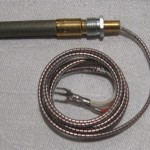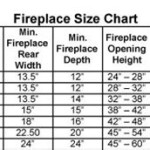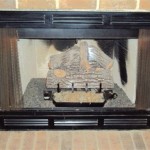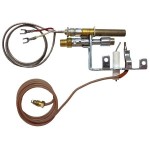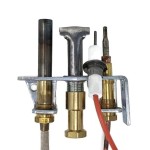Freestanding Fireplace Screens: Safety, Style, and Functionality
Freestanding fireplace screens are essential safety accessories for homes with functioning fireplaces. They provide a crucial barrier between the open flame and the surrounding environment, reducing the risk of sparks and embers escaping and potentially igniting flammable materials. Beyond safety, these screens also serve as decorative elements, enhancing the overall aesthetic appeal of the fireplace and the room it occupies. Understanding the various types, features, and considerations involved in selecting a freestanding fireplace screen is crucial for ensuring both safety and style.
The primary function of a freestanding fireplace screen is to contain the fire within the fireplace. This containment is achieved by preventing the escape of hot embers that can pop and crackle from the burning wood. These embers, if left unchecked, can land on carpeting, furniture, or even clothing, leading to burns, scorch marks, or, in the worst-case scenario, a house fire. A well-constructed screen with appropriately sized mesh openings effectively traps these embers while allowing sufficient airflow for combustion.
Furthermore, a fireplace screen provides a barrier that helps prevent accidental contact with the open flame, particularly important in households with children or pets. Curiosity can lead to dangerous situations, and a screen acts as a physical deterrent, reducing the likelihood of burns or other injuries. The distance provided by the screen can also mitigate the radiant heat emitted from the fireplace, making the area immediately surrounding it more comfortable.
Beyond the essential safety functions, freestanding fireplace screens contribute significantly to the aesthetic of a room. They are available in a wide range of styles, materials, and finishes, allowing homeowners to select a screen that complements their existing décor. From classic wrought iron designs to modern, minimalist styles, there is a fireplace screen to suit virtually every taste and interior design scheme.
The selection of a suitable freestanding fireplace screen requires careful consideration of several factors, including the size and style of the fireplace, the overall décor of the room, and the specific safety requirements of the household. Taking the time to assess these factors will ensure that the chosen screen provides both the necessary protection and the desired aesthetic appeal.
Key Point 1: Types of Freestanding Fireplace Screens
Freestanding fireplace screens are not a one-size-fits-all solution. They are manufactured in various designs, each with its own advantages and suitability for different fireplace styles and homeowner preferences. Understanding these distinctions is key to selecting the most appropriate screen for a given situation.
Single-Panel Screens: These are the simplest type of freestanding fireplace screen, consisting of a single, flat panel that stands in front of the fireplace opening. They are often the most affordable option and are suitable for smaller fireplaces or those with a relatively simple design. Single-panel screens offer basic protection from sparks and embers but may not provide the same level of coverage as multi-panel screens, particularly for wider fireplaces.
Three-Panel Screens: This is arguably the most common type of freestanding fireplace screen. They consist of a central panel and two side panels that are hinged to the main panel. The side panels can be adjusted to fit the width of the fireplace opening and can also be folded inward for storage when the fireplace is not in use. Three-panel screens offer greater coverage and stability compared to single-panel screens and are well-suited for a wide range of fireplace sizes and styles.
Five-Panel Screens: Similar to three-panel screens, five-panel screens offer even greater coverage and stability, especially for larger fireplaces. They consist of a central panel and two sets of hinged side panels. The additional panels allow for more precise adjustment to the fireplace opening and provide a more substantial barrier against sparks and embers. Five-panel screens are often more ornate in design and can serve as a prominent decorative element in the room.
Arched Screens: These screens feature an arched top, adding a touch of elegance and sophistication to the fireplace. They are available in single-panel, three-panel, and five-panel configurations and can be made from various materials, including wrought iron, steel, and brass. Arched screens are particularly well-suited for fireplaces with a traditional or formal design.
Mesh Screens: While most freestanding fireplace screens incorporate a mesh component, some are designed primarily with mesh as the primary material. These screens offer excellent visibility of the fire while still providing effective protection against sparks and embers. Mesh screens can be made from various metals, including steel, brass, and copper, and can be powder-coated or finished in various colors.
Key Point 2: Materials and Construction of Fireplace Screens
The materials used and the construction techniques employed in the manufacturing of a freestanding fireplace screen significantly impact its durability, safety, and aesthetic appeal. Understanding the properties of different materials and construction methods is essential for making an informed purchase.
Wrought Iron: Wrought iron is a traditional material for fireplace screens, known for its strength, durability, and distinctive aesthetic. Wrought iron screens are often handcrafted and feature intricate designs and patterns. They can be quite heavy, providing excellent stability. However, wrought iron is susceptible to rust if not properly treated and maintained.
Steel: Steel is a more modern alternative to wrought iron, offering similar strength and durability at a lower cost. Steel screens are often powder-coated for corrosion resistance and are available in a wide range of colors and finishes. Steel screens can be manufactured with simpler or more elaborate designs, making them a versatile option for various interior styles.
Brass: Brass fireplace screens are valued for their elegant appearance and warm, golden color. Brass is a relatively soft metal, so brass screens are often constructed with a steel frame for added strength. Brass screens require regular polishing to maintain their luster and prevent tarnishing.
Copper: Similar to brass, copper screens offer a distinctive and attractive appearance. Copper is also a relatively soft metal and is often used in conjunction with a steel frame. Copper screens develop a natural patina over time, adding to their character and charm.
Mesh: The mesh used in fireplace screens is typically made from steel, brass, or copper. The mesh should be tightly woven to prevent sparks and embers from escaping. The size of the mesh openings is a critical safety factor; smaller openings provide better protection but may slightly reduce airflow to the fire. The mesh should be securely attached to the frame and free from any tears or holes.
Construction Techniques: The construction methods used to assemble a fireplace screen also contribute to its overall quality and durability. Welded joints are typically stronger and more durable than bolted joints. The hinges on multi-panel screens should be sturdy and well-aligned to ensure smooth and reliable operation. The feet or base of the screen should be stable and level to prevent tipping.
Finishes: The finish applied to a fireplace screen not only affects its appearance but also provides protection against corrosion and wear. Powder coating is a common finish for steel screens, offering excellent durability and a wide range of color options. Other finishes include paint, lacquer, and clear coat. The finish should be heat-resistant to withstand the high temperatures near the fireplace.
Key Point 3: Safety Considerations and Maintenance
While freestanding fireplace screens inherently enhance safety, specific considerations regarding their use and maintenance are crucial for maximizing their effectiveness and ensuring long-term performance.
Screen Placement: The screen should be positioned a safe distance from the fireplace opening. This distance will vary depending on the size and intensity of the fire, but a minimum of 6-12 inches is generally recommended. This distance allows for adequate airflow while still providing a barrier against radiant heat.
Proper Fit: The screen should be wide enough and tall enough to completely cover the fireplace opening. Gaps or openings around the screen can allow sparks and embers to escape, defeating the purpose of the screen. For multi-panel screens, the side panels should be adjusted to fit snugly against the fireplace surround.
Child and Pet Safety: Ensure the screen is stable and cannot be easily knocked over by children or pets. If necessary, consider using anchors or brackets to secure the screen to the fireplace surround or the wall. Educate children about the dangers of the fireplace and the importance of staying away from the screen.
Regular Inspection: Regularly inspect the screen for any signs of damage, such as tears in the mesh, loose hinges, or rust. Repair or replace the screen as needed to maintain its safety and effectiveness. A damaged screen compromises its protective capabilities and should be addressed promptly.
Cleaning: Periodically clean the screen to remove soot, ash, and creosote buildup. Use a soft brush or vacuum cleaner with a brush attachment to remove loose debris. For stubborn stains, use a mild detergent and water solution. Avoid using abrasive cleaners, as they can damage the finish. Ensure the screen is completely dry before placing it back in front of the fireplace.
Creosote Buildup: Creosote is a flammable substance that can accumulate on fireplace screens over time. Excessive creosote buildup can increase the risk of a chimney fire. It is essential to have the chimney professionally inspected and cleaned regularly to remove creosote and other debris. A clean chimney, combined with a well-maintained fireplace screen, provides the best protection against fire hazards.

Freestanding Fireplace Screens Ironhaus

Barton Black Freestanding Flat Steel 2 Panel Fireplace Screen For Indoor Living Room 96315 H1 The Home Depot

Barton 47 In W X 30 H 3 Panel Freestanding Fireplace Screen Tempered Glass With Handle 95060 The Home Depot

12 Freestanding Fireplace Screens For Every Style Farmhouse

12 Best Freestanding Fireplace Screens 2024

12 Best Freestanding Fireplace Screens 2024
High Quality Fireplace Doors Screens Design Specialties

Plasma Fire Screen Flat Plane Of Glass Ecosmart

12 Best Freestanding Fireplace Screens 2024

Barton 36 In W X 26 H Single Fire Place Panel Tempered Glass Fireplace Screen Freestanding 95057 The Home Depot
Related Posts

